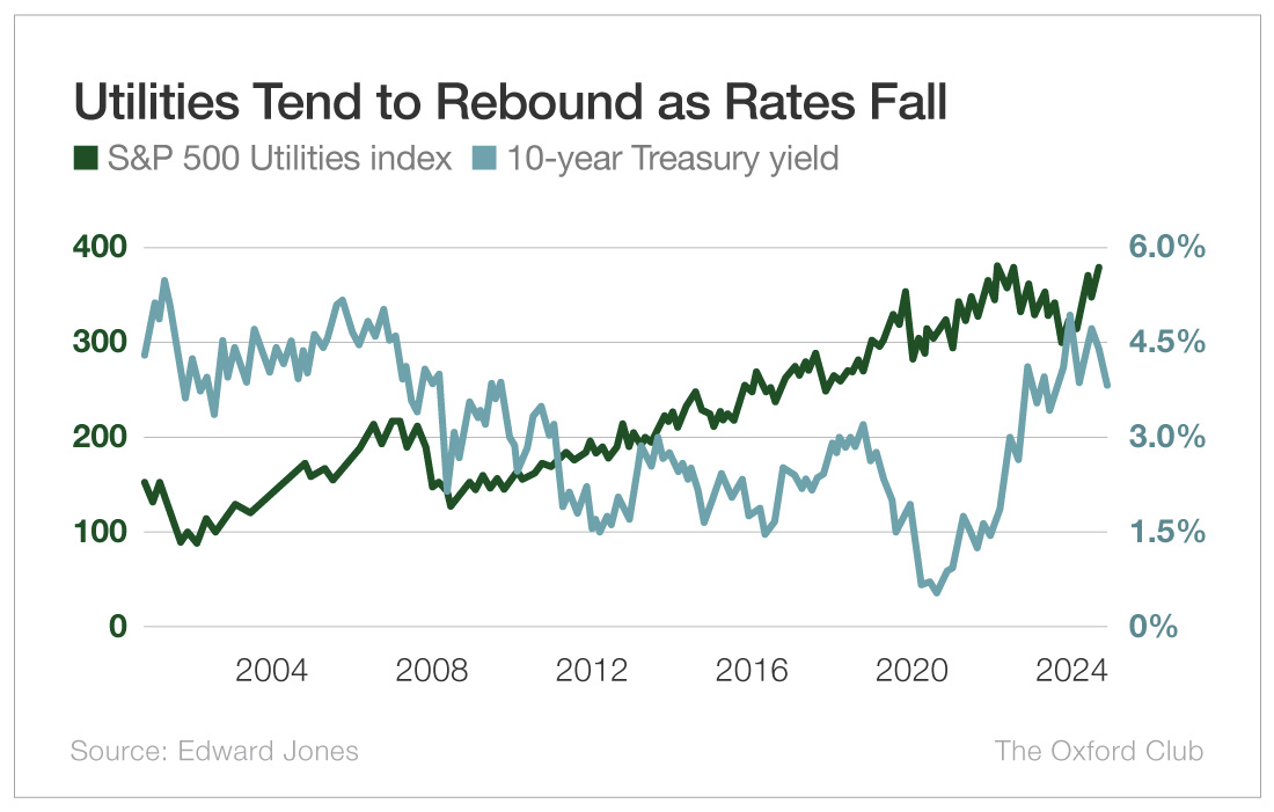As expected, the Federal Reserve lowered interest rates in the second half of 2024 – even though I argued vehemently against a rate cut all year. (Like my children, the Fed ignored my sage advice.)
The central bank’s two rate cuts marked the end of the rate-hiking cycle that began in March 2022, when inflation was approaching a more than 40-year high.
So, now that we’ve entered a rate-cutting environment, what stocks are likely to do well? Here are the top three sectors I expect to outperform during this new era.
- Real estate investment trusts
Real estate investment trusts, or REITs, are companies that buy real estate properties and rent them out to tenants. But these businesses don’t just buy houses or offices. They also own retail centers, healthcare facilities… even shelf space in data centers.
A stock that I’ve held in the Oxford Income Letter portfolio for a long time – and that I still recommend – is Four Corners Property Trust (NYSE: FCPT).
A former spinoff from Darden Restaurants (NYSE: DRI), Four Corners owns a ton of restaurant real estate, much of which it leases to Darden eateries. However, the company has expanded significantly in recent years, now holding properties in auto service, medical retail, and other retail as well.
Four Corners’ adjusted funds from operations, which is the measure of cash flow used by REITs, has been steadily rising, enabling the company to hike its dividend for eight years in a row. The stock now pays a 5.1% (and growing) yield.
- Homebuilders
There are not enough houses to meet demand in the U.S. The shortfall is staggering. It is estimated that we would need 7 million new homes in order to catch up with demand.
And demand could soon increase even more. As interest rates fall, mortgages will become more affordable. If the 30-year fixed rate mortgage (which is currently averaging about 6.7% nationwide) dips closer to 6%, I believe we’ll see a rush of new homebuyers.
Furthermore, on his first day back in office, President Trump signed an executive order directing the heads of all government departments and agencies to “[pursue] appropriate actions to lower the cost of housing.”
So demand could be set to increase significantly, while supply is still tight.
I particularly like homebuilders that are catering to first-time buyers, as first-time buyers will likely be the most ready to make the leap to a new home in the coming year.
Century Communities (NYSE: CCS) focuses on the entry-level market. In the company’s own words, this allows it to “target the broadest potential pool of customers.”
Century had a down year in 2023, which is not entirely surprising given that interest rates were rising for most of 2022 and 2023. Last year, however, the company’s numbers rebounded strongly.
Revenue in the first half of the year grew by 24% year over year, while earnings grew 75%. Wall Street predicts robust 15% earnings growth in 2025.
The stock trades at just six times earnings – well below the sector median of 17.6.
It also pays a small dividend.
- Utilities
Utilities tend to perform well when rates fall. This is because they borrow a lot of money, and falling rates mean lower interest expenses.
The chart below shows the inverse relationship between interest rates (as measured by the 10-year Treasury yield) and the performance of the S&P 500 Utilities index.
Utilities’ strong dividend yields also become more appealing as rates decline, because low rates make it more difficult to find meaningful yields elsewhere.
Duke Energy (NYSE: DUK) is based in North Carolina and delivers power to 8.4 million customers in seven states. It has one of the largest electricity transmission systems in the country.
Other than the pandemic year of 2020, revenue has been steadily growing since 2015. In 2024, profits were the highest they’ve been in at least a decade.
This is a very well-run company that sports a 3.5% yield.
Generally speaking, falling rates are good for the stock market, and I expect these sectors and individual stocks to do particularly well.
